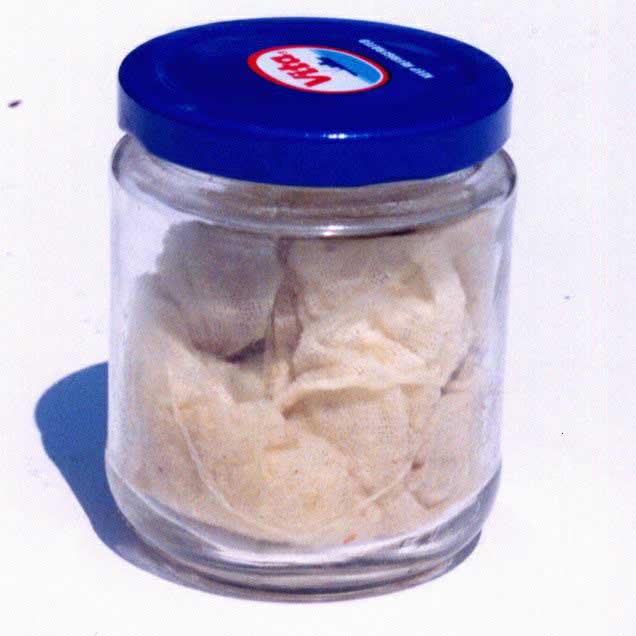Using Gel Stain as a Glaze
You can custom-mix your own glazes using wiping stains, gels, and extenders (to modify open times). In this thread, experienced hands explain techniques. June 28, 2005
Question
I have been doing sample boards, which I have been recommended to do before and in reference to the glazing portion of my test, I have a good supply of Old Masters penetrating stain colors. Can I mix those with an Old Masters natural gel stain to achieve a wiping stain/glaze? The advantage for me is purchasing only one product to blend a lot of different colors of glaze. Any help would be appreciated
Forum Responses
(Finishing Forum)
From contributor P:
I've used a product from called Glazing Stain Neutral New as both a wiping stain and a traditional glaze. When it’s tinted with 824 or 844, it works very well for both applications.
From contributor M:
The basic difference between a stain and a glaze is the open time. The size of the pieces and the type of glazing that you will be doing (in some cases the wiping stains) will work as a glaze. In other cases you will need a glaze which has an extender added to allow you more open time to work out the glaze.
From contributor D:
Adding to what what Contributor M said about open time - I think that you will find that the gel stain starts to set up too fast to manipulate it over a surface of any decent size. I had trouble with it on 1' x 3' doors (
Minwax gel stain).
Glazes need that open time for two main reasons: (1) so that you can work it to get the desired look, and (2) so that you can work it to make sure that you leave no appreciable thickness to it, because this is one way to cause an inter-coat adhesion problem. Gel stains can be used as glazes, although they aren’t as easy to work with as a regular glaze that’s made for those purposes.
From contributor C:
My answer to your question would be yes. Open time is a concern when glazing. If the old Masters product you are using has a color you like, why make a glaze to match. A prepared glaze has a glazing liquid added to the colorant. Glazing with a gel stain in some cases is advantageous to wiping stains. They contain, in many cases, a
polyurethane additive that helps to bind the color to the finish.
When I use Bartley's I thin the stain down to the consistency I want, and add a little Penetrol or flatting oil (11:1 mineral spirits to boiled linseed oil) to aid in extending the open time. Then I apply and manipulate it to the desired look. Then I seal it with vinyl sealer and finish it with topcoat choice.
From Paul Snyder, forum technical advisor:
To the original questioner: The penetrating stain contains linseed oil and mineral spirits along with the colorants. When you add this stain to the gel stain, you'll end up with a stain/glaze that has more body (somewhere between the penetrating stain and gel stain, depending on the ratio you use) and has a working time that's also between the two products.
The added body thickness/thixotropic properties the gel stain provides will allow you to use the mixture as a highlighting glaze for coloring profiles and other construction features. It will also give you a little more color retention in the pores if you use it as a glaze over a wash-coat on the entire surface. If you add linseed oil, it will give you more working time, as well as take longer to dry and cure. Thinning with a little odorless mineral spirits will also increase the working time without affecting the dry time or cure time.
From contributor M:
Another advantage of adding one of the dying oils instead of one of the solvents is that the drying oils will bulk up and give body to the glaze if you are doing any work on vertical sections.
From Paul Snyder, forum technical advisor:
To contributor M: I thought using gel stain (thick, thixotropic) would add body to the penetrating stain. BLO is very thin by comparison.
From contributor M:
Paul, The BLO is used to thicken up the stain.
From contributor D:
Always take great care in what you do with your rags when you are not using them if you are using any product which contains linseed oil, boiled linseed oil or any drying oil (oils which cur by oxidation). It is never stating the obvious that there is always a risk of spontaneous combustion from rags which have been used with these materials and have not been disposed of correctly.
The correct method of disposal is to place the rags in a metal can which is filled with water and then put an airtight cover on the metal can. Many people lay their rags out flat. The key is to lay them flat with no folds so that the drying oils will cure out, and whatever heat they generate on the process cannot build up enough to ignite itself, as would be the case with folded or wrinkled rag.
From contributor M:
Here’s a way that you can save your oily wipers, padding /rubbers, and glazing cloths. Just store them in a glass jar with a lid and you can use them over and over again.

Click here for full size image
